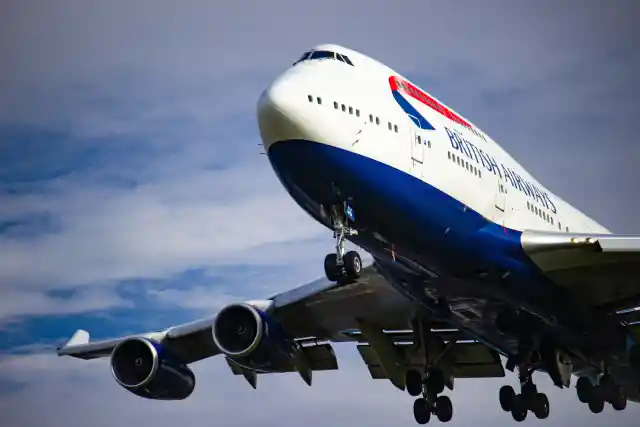Long-haul flight perils can range from a wailing infant to an obnoxious seatmate. Even seasoned travelers detest the thought of taking a long flight. With limited seat space and boredom, it may be excruciating.
Although it might be difficult, it's not impossible to be comfortable on a flight. Consider the recommendations below to make the most of your flight time.
Book wisely
Choose your airline wisely and refrain from cutting shortcuts. Attempt to prevent or limit your connections as much as possible. Numerous connections and delays may be exhausting.


Use your rewards and mile points to get a free upgrade. Every type of upgrade is always beneficial since it allows you to experience additional benefits that you would not have otherwise.
De-stress before you arrive
Enjoy your breakfast. Visit the gym. Find and read a book. Take a stroll. It's crucial to unwind before starting your trip.


Keeping your body moving a day before a trip helps with sleep schedule regulation and makes sitting for an extended amount of time more tolerable. An aching body is the last thing you want on a lengthy journey.
Choose the right seat
Getting a "poor" seat may be avoided by arriving early or purchasing an advanced seat selection. Check-in as early as you can for your flight if you bought basic economy, which allocates you a seat at check-in.


At all costs, stay away from the back-row seats next to the restroom. The easiest method to get through a lengthy trip is to select an aisle seat since you'll have the freedom to walk about, stretch your legs, and use the restroom without bothering the passengers next to you.
Dress right
Keep it comfy and loose. Keep in mind to pack layers in case it becomes chilly; a cardigan or sweater is usually a smart idea to carry. Bring compression socks, and wear them.


Even though they may feel a touch snug, they work to improve blood flow to your lower legs, which lowers your risk of blood clots and ankle swelling. During long-haul flights, your chance of having deep vein thrombosis is noticeably elevated. A dangerous blood clot might develop if you are immobile for longer than 10 hours.
Bring your own snacks
The majority of long-haul flights offer a small-boxed in-flight meal, but the food on airplanes is usually loaded with chemicals, oils, and dense carbs. All of which will make you feel lethargic, bloated, and exhausted.


The best strategy to stay away from flight food is to have a substantial, healthy meal before and/or just after your journey, carry lots of snacks, such as fruit and protein bars, and drink lots of water. This will not only aid with jet lag, but it will also help with the low-energy experience.
Buckle your seat belt over your blanket
Make sure your seat belt buckle is visible if you want to sleep at all while flying. The seat belt light will illuminate in the event of turbulence, and flight attendants may round the cabin to ensure that everyone is fastened.


They will wake you up to see whether you are strapped behind your blanket, where they can't see it.
Stay hydrated
Make sure to drink lots of water because the air aboard airplanes has a low relative humidity and is therefore quite dehydrating. The Aerospace Medical Association recommends an upper limit of 8 ounces per hour for water consumption as a general rule.
While it's not absolutely required on short flights, making sure passengers are drinking enough water becomes increasingly important on longer journeys.
Prepare in-flight entertainment
The best way to pass the time on a long flight, apart from sleeping, is to partake in some type of entertainment, whether it's reading a book or watching a movie on the plane.


It's best to carry your own entertainment with you rather than relying only on the in-flight entertainment system because it's always conceivable that it won't be operating when you need it. Passengers can download programs, videos, podcasts, and books from their home computer prior to leaving if they are taking a Kindle or tablet with them.
Charge those devices
The last thing you need on an 11-hour flight is for your iPad to run out of battery. This is particularly valid if the in-flight entertainment system isn't functioning.


In many cases, airlines do not provide power outlets in economy class, so you may want to bring a battery pack.
Prepare for better sleep
Get quality noise-canceling headphones. If you can't afford them, several high-quality earplugs can do to muffle airline noise or rowdy passengers. Bring a pillow with you. A small pillow is a must-have carry-on item for long-distance travelers.


Travel pillows are available at almost all airports. Add a high-quality eye mask to the mix. One can also use a blindfold to aid in sleeping on airplanes. If one can sleep through the entire thing easily, the experience is considerably more pleasant.
Pack your hygiene essentials
We all know that flights are dusty and germy, so use anti-bacterial wipes to clean your armrests, seat belt, seat back tray, and other surfaces. Particularly on a lengthy journey, a somewhat sterile environment ought to make it a little bit simpler for you to unwind and sleep.


Don't forget to use hand sanitizer, which can help you feel more at ease when you touch your face or eat.
Combat dry air
On an airplane, the recycled air may dehydrate you from the inside out and also make your eyes and skin drier than usual. You can fight this dry air and keep your skin feeling moisturized and fresh by using lip balms and moisturizers that are tiny enough to pack in your carry-on.


In order to prevent dry and itchy eyes when using contact lenses, you may wish to choose to wear your glasses instead. If you want to reward yourself, take some face wipes and a moisturizing sheet mask with you on your trip to keep your skin moisturized and radiant.